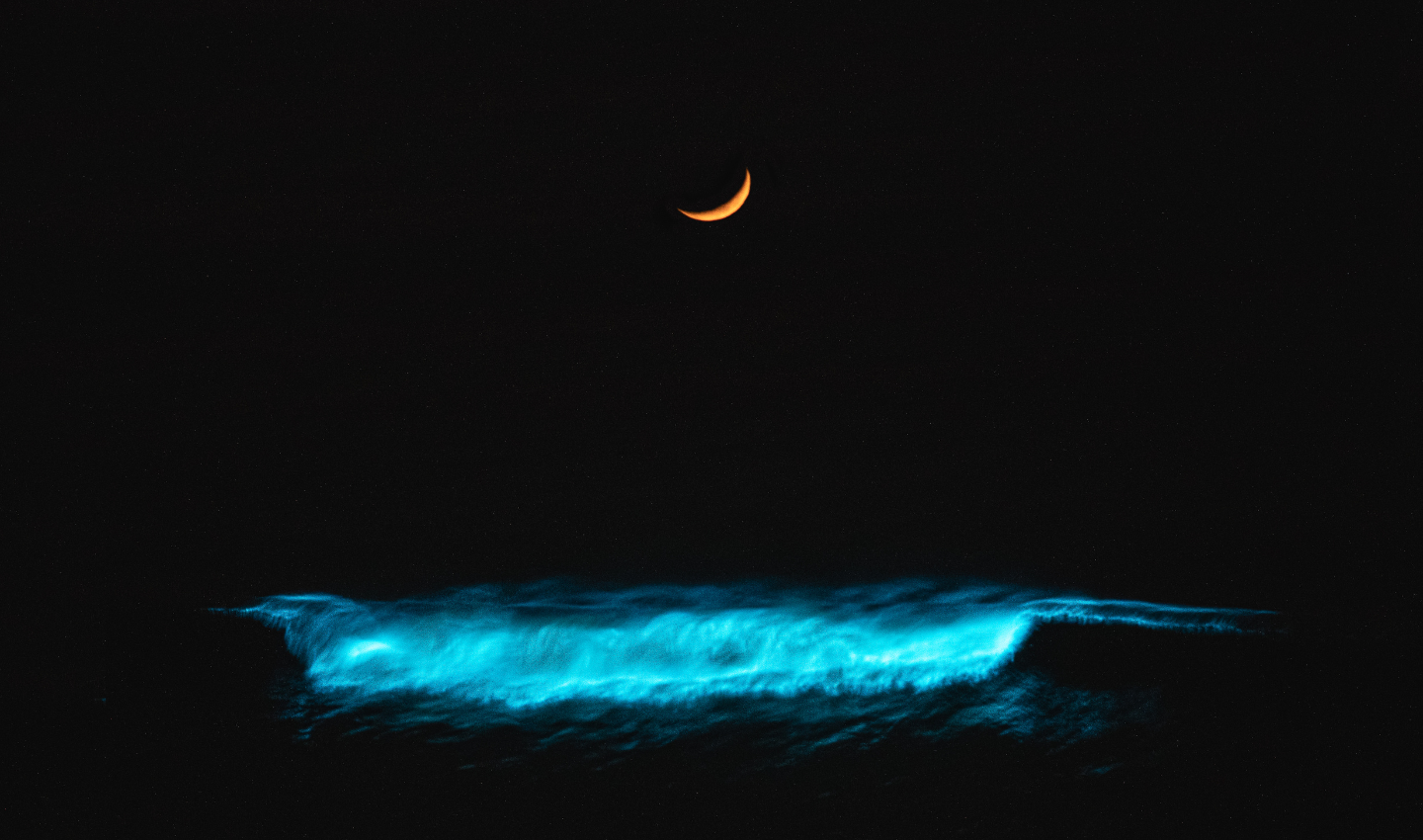- Marine Life Facts
- Science: Explained
What happens after a whale dies? Life after death in the deep-sea

A dead whale descends into the darkness of the deep-sea abyss.
In life, these majestic creatures travel vast distances playing an important role in surface ecology. But even in death, their decaying remains become a haven of life on the black Ocean floor.
Here in the deep Ocean the environment is sparse, offering fewer resources to sustain life. What falls from above, marine snow, is the steady trickle of dead organic material and supports an array of life on the seabed.
A dead whale is a 30-tonne avalanche of fat and organic carbon, equivalent to more than 1000 years’ worth of marine snow across 100 square meters.

Eventually, a whale fall (a whale’s death) becomes an island of biodiversity in the deep-Ocean.
1. It all starts with a feeding frenzy.
Soon after the whale falls, a variety of species descend upon it and the dinner party begins.
The first to arrive are the large Ocean wanderers such as hagfish (eel-shaped jawless fish) or gigantic sleeper sharks. These mobile scavengers remove soft tissue by rasping or tearing at the flesh exposing the energy-rich skeleton, giving the name of this phase the mobile-scavenger stage.
2. As the pieces get smaller so do the scavengers.
It can take up to two years for the mobile-scavengers to finish feeding on the whale, where the next wave of guests arrives in a second phase known as the enrichment-opportunist stage.
Animals like polychaetes (a class of marine worms) and crustaceans including amphipods (shrimp-like crustacea) will move in to feed on remaining blubber and burrow into the nutrient enriched sediments surrounding the whale.

3. Finally, only the bones of the whale remain.
These would seemingly have no further use. However, ecological diversity is about to flourish in the sulfophilic stage of the whale fall. The whale’s bones provide a large reservoir of energy-rich lipids, a shining prize to deep-sea organisms.
Bacteria break down fatty lipids in the bones, releasing sulphides. The sulphides can be used to generate energy, in a process called chemosynthesis (producing food using chemicals as an energy source instead of sunlight).
These chemosynthetic bacteria have become resistant to sulphides’ toxicity and can establish bacterial mats which act as a foundational food source, supporting a huge array of marine biodiversity: sponges, mussels, limpets, sea spiders and snails.
The breakdown of bone-lipids can take 50-100 years and these mini-ecosystems are highly significant for seabed ecology. Even then, after the complete extraction of nutrients, it isn’t over.

Decades after a whale dies, the whale-fall is still essential to marine ecosystems:
Some scientists believe there’s a further stage of succession: the reef stage. Even after the feeding frenzy, the whales’ bones can remain for more than 100 years, acting as hard surface for suspension feeders to settle.
These ‘habitat islands’ act as evolutionary stepping stones between other seafloor ecosystems like hydrothermal vents. This may have allowed sulphide-specialised organisms to spread across the seafloor and diverge into new species.

Despite whale-fall ecosystems being poorly sampled, 407 species have been found living off the carcasses globally, which is high for the bottom of the sea. Of these, 21 species can only be found on whale-fall, known as whale-fall specialists.
Whale-fall specialists are species that require a whale carcass to complete their lifecycle and maintain their populations. These marine organisms will jump from habitat island to island to survive.
For example, Osedax, Latin for “bone-eater”, are a genus of polychaetes (marine worms) found worldwide. They are important ecosystem engineers by eroding whale bones and allowing rarer species to colonise the whale skeleton.
How whale populations impact the global Ocean?
Whale-falls also contribute to the conversion of inorganic carbon (CO2) into organic carbon (marine life), a set of processes known as the Biological Carbon Pump (BCP). This carbon is sequestered (stored) in the deep Ocean.

Whales deliver huge amounts of carbon in their biomass to the seafloor, which is then locked-away for centuries within deep-sea sediments.
Any threat to whale populations will threaten entire ecosystems and disrupt the process of carbon sequestration.
Commercial whaling, for example, has been depleting whale populations for around 1000 years, beginning in 1000CE. Experts agree that tens of millions of whales were likely killed during this period, pushing many whale species to extinction and causing the extinction of whale-fall specialist species, who rely on whale falls for survival.
A single whale-fall can provide everything a whale-fall specialist needs for 50-100 years, meaning there is a lag-time of at least 30-40 years before the decline in whale populations is felt. Which is to say, if whale populations can recover, we may be able to mitigate the impacts on deep-sea ecosystems

As we follow the timeline of a whale’s life, we can see the incredible contribution whales make to the Ocean.
From enhancing surface ecology in life, to supporting entire ecosystems in death.



